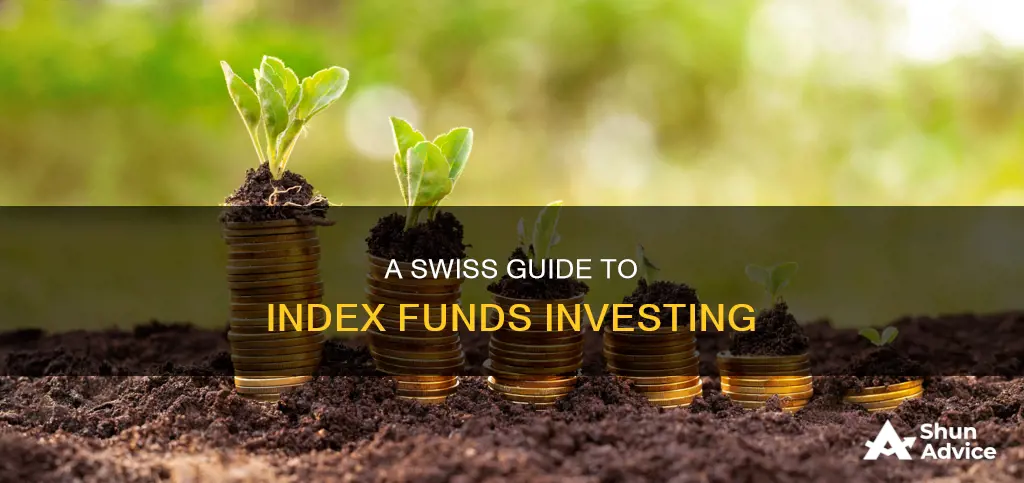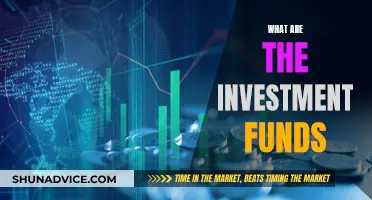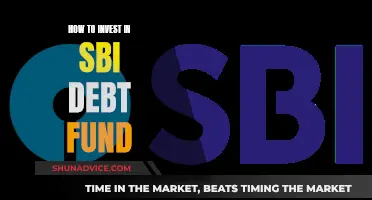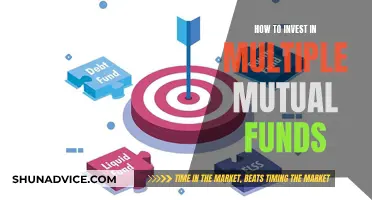
Index funds are a type of investment fund that aims to replicate a market index. They are passively managed, meaning they require very little work from fund managers and are often much cheaper than actively-managed funds. The Swisscanto index funds, for example, offer a broad and flexible range of products and services, covering all common investment categories.
When investing in the Swiss stock market, one can choose between four indices tracked by Exchange-Traded Funds (ETFs). ETFs are traded on the stock exchange, whereas index funds are not. ETFs are often equated with passive index investments, but both active and passive strategies can be launched as an ETF or a traditional fund.
When selecting an index fund or ETF, the most important metric to consider is the Total Expense Ratio (TER). The TER represents the total fees removed from the fund annually to pay for its management and is expressed as a percentage. Other factors to consider include Assets Under Management (AUM), the number of stocks, trading volume, domicile, dividend distribution, and replication technique.
Additionally, it is worth noting that Swiss index funds are exempt from Swiss stamp duties, whereas Swiss ETFs are not. Understanding these nuances and conducting thorough research can help individuals make informed decisions when investing in index funds in Switzerland.
| Characteristics | Values |
|---|---|
| Investment options | Equities, bonds, indirect real estate investments, commodities |
| Number of funds | Around 80 |
| Management | Managed by a team of experts with over 20 years of experience |
| Investment strategy | Replicates the risk and return characteristics of the relevant benchmark as closely as possible |
| Advantages | No Swiss stamp duty is payable on purchases and sales |
| Exclusion criteria | Manufacturers of prohibited weapons |
| Location | Developed and managed exclusively in Switzerland |
| Trading | Subscriptions and redemptions can be carried out on any bank working day |
What You'll Learn

Understand the difference between index funds and ETFs
Exchange-traded funds (ETFs) and index funds are both great investment options for beginners and experts alike. They share many similarities, but there are some key differences to note before deciding which option is best for you. Here is an overview of how these two investment vehicles compare:
Trading Mechanism and Flexibility
The most significant difference between ETFs and index funds is their trading mechanism and flexibility. ETFs trade like stocks on a stock exchange, meaning they can be bought and sold throughout the trading day, and their prices fluctuate based on supply and demand. On the other hand, index funds can only be bought and sold at the end of the trading day, based on the fund's net asset value (NAV). This means that with index funds, your trades are priced at the end of the day, while ETFs offer real-time pricing.
Minimum Investment
ETFs typically have lower minimum investment requirements than index funds. While index funds often have minimum investment amounts, sometimes in the thousands, ETFs can be purchased as little as one share, and some brokers even offer fractional shares. This makes ETFs more accessible to investors with smaller amounts to invest.
Taxation
ETFs are generally more tax-efficient than index funds due to their structure. ETFs use an "in-kind" creation and redemption process, minimising capital gains distributions and resulting in fewer capital gains taxes for investors. In contrast, index funds may generate capital gains taxes when the fund manager sells holdings to meet redemptions, which can lead to a tax liability for investors even if they haven't sold their shares.
Fees and Costs
Both ETFs and index funds offer low expense ratios, but there are other fees to consider. ETFs may incur trading commissions, while index funds often have sales commissions and load fees, which can be charged for buying or selling funds. These additional fees can impact your overall returns, so it is essential to compare the total costs of each investment option before deciding.
Liquidity
Liquidity refers to how easily an investment can be converted into cash. ETFs offer higher liquidity than index funds due to their ability to be traded throughout the day. Index funds, which are bought and sold only at the end of the trading day, have more limited liquidity.
Suitability for Long-Term Investors
For long-term investors, the differences between ETFs and index funds may be less of a concern. Whether you buy or sell at noon or 4 pm is unlikely to significantly impact the value of your investment over a long time horizon. However, for those interested in intraday trading or seeking more immediate liquidity, ETFs may be a better option.
Currency Hedge Funds: A Thing of the Past?
You may want to see also

Compare the Total Expense Ratio (TER) of different funds
When comparing the Total Expense Ratio (TER) of different funds, it is important to note that the TER is the most internationally accepted and commonly used cost indicator in asset management. It gives investors an idea of the costs incurred annually by each product, including management, administration, custody, and additional service fees. This makes it an important factor in the analysis and selection of investment products.
The TERs of Switzerland ETFs can vary, and it is essential to consider the specific index and ETF in question. For example, the annual TER of ETFs on Swiss stock market indices ranges from 0.25% p.a. to 0.51% p.a. The cheapest Switzerland ETFs by TER include the Amundi DJ Switzerland Titans 30 UCITS ETF Dist, with a TER of 0.25% p.a., and the Amundi MSCI Switzerland UCITS ETF CHF, with a TER of 0.35% p.a.
On the other hand, Europe indices with a share of Switzerland have a wider range of TERs, from 0.09% p.a. to 0.52% p.a.
It is worth noting that the TER of direct real estate investments differs from that of other investment products. This is because it includes the costs of property management, which are often provided by a third-party provider.
When making investment decisions, it is crucial to consider not only the TER but also other factors such as distribution yield, price performance, and investment yield. Additionally, investors should consider the potential income based on the current valuation, such as rent exploitation and cost-effective renovations.
Investing Funds: Where to Start for Maximum Returns
You may want to see also

Consider the fund's Assets under Management (AUM)
When considering investing in index funds in Switzerland, it is important to take into account the fund's Assets Under Management (AUM). AUM is the market value of the investments managed by a person or entity, typically on behalf of clients. This can include a range of investment vehicles such as stocks, bonds, mutual funds, and cash, among others.
In the context of index funds in Switzerland, AUM can provide insights into the size and success of the fund. A larger AUM often indicates a more established and successful fund, as it suggests that more investors have entrusted their capital to the fund manager. This can be an indicator of the fund's performance and the level of investor confidence in its strategies.
When evaluating the AUM of Swiss index funds, it is worth comparing their values with historical data and competitor funds. This will help you identify the growth and relative performance of the fund. For example, if a Swiss index fund has an AUM of CHF 10 billion and has shown a consistent increase in value over the past few years, it indicates positive performance and investor confidence.
Additionally, it is important to consider the capacity constraints of the fund's investment strategy. Some funds may choose to close their doors to new investors once they reach a certain AUM to avoid adverse effects on their performance. This is particularly relevant for funds with specific investment strategies that may become challenging to implement effectively beyond a certain level of AUM.
By considering the AUM of Swiss index funds and evaluating their historical growth, competitor comparisons, and capacity constraints, you can make a more informed decision about the potential success and stability of the fund.
NRIs in the USA: Mutual Fund Investment Block
You may want to see also

Evaluate the number of stocks (or holdings) in the fund
When comparing two index funds, it is important to evaluate the number of stocks or holdings in each fund. While it may seem intuitive that two index funds following the same index should hold the same number of stocks, this is not always the case. For example, the Vanguard S&P 500 ETF (VOO) has 509 stocks, while the S&P 500 index comprises 505 stocks. This discrepancy can occur due to companies, such as Alphabet (Google), having multiple share classes included in the index.
There are several reasons why an index fund may hold more or fewer stocks than its corresponding index. If the fund is small, it may not have the resources to purchase shares in all the companies within the index. Additionally, most funds are market-capitalization-weighted, resulting in a higher number of shares for larger companies compared to smaller ones. As the fund grows, it will gradually acquire shares in the smaller companies. To reduce costs, some funds may also choose to limit the frequency of buying and selling, leading to differences between the index and the fund's holdings. It is worth noting that fund managers can add or remove companies from the index as well.
When evaluating the number of stocks in an index fund, it is generally preferable to select funds with a number of holdings that closely match the number of stocks in the index. This ensures that the fund accurately represents the performance of the underlying index. However, for large indexes, paying close attention to the number of holdings may be particularly important.
In summary, while evaluating the number of stocks in an index fund is crucial, other factors such as the total expense ratio (TER), assets under management (AUM), trading volume, and replication technique should also be considered when making investment decisions.
Robo Advisors: Index Fund Investing Strategies Explored
You may want to see also

Assess the fund's trading volume
When assessing the trading volume of an index fund, it is important to understand how liquid a fund is and the ease of buying and selling shares. Trading volume refers to the number of transactions carried out for the fund, with each share bought or sold contributing to the volume. This metric is significant because it indicates the liquidity of the fund. A large trading volume suggests that shares are actively traded and there is a high level of liquidity. Consequently, investors can buy and sell shares with minimal impact on the market price.
Additionally, a high trading volume often coincides with a smaller bid-ask spread, which is the difference between the ask price (the best offer to sell) and the bid price (the best offer to buy). A narrower spread means that investors can obtain better prices when buying or selling shares, minimising potential losses.
For example, let's compare three S&P 500 funds: SPDR S&P 500 ETF (SPY), iShares Core S&P 500 ETF (IVV), and Vanguard S&P 500 ETF (VOO). SPY has a trading volume of 122 million shares per day, while IVV and VOO have lower volumes of 6.3 million and 4.4 million trades per day, respectively. Despite SPY being less than three times larger than VOO in terms of size, its trading volume is thirty times higher. This highlights the importance of considering trading volume when selecting an index fund.
While trading volume is a crucial factor, it is not the sole determinant when choosing an index fund. For long-term investors, the impact of trading volume may be less significant compared to short-term traders. Nonetheless, understanding the liquidity and potential price impacts of buying or selling shares can be advantageous for all investors.
Corporate Bond Funds: Smart, Secure Investment Strategy
You may want to see also
Frequently asked questions
Index funds are a passively-managed investment vehicle that aims to replicate the performance of an underlying index. They are often much cheaper than actively-managed funds as they require very little work from fund managers. Index funds are not listed on the stock exchange and are generally offered directly by fund managers or banks. Swiss index funds are also not subject to Swiss stamp duties.
Some of the popular index funds in Switzerland include Swisscanto index funds, which cover various asset classes such as equities, bonds, indirect real estate investments, and commodities. Another popular option is Vanguard, which offers low-cost, broadly diversified ETFs.
When choosing an index fund in Switzerland, it is important to consider the total expense ratio (TER), which represents the total fees removed from the fund each year. Other factors to consider include the assets under management (AUM), the number of stocks or holdings, trading volume, and the fund domicile or location.







